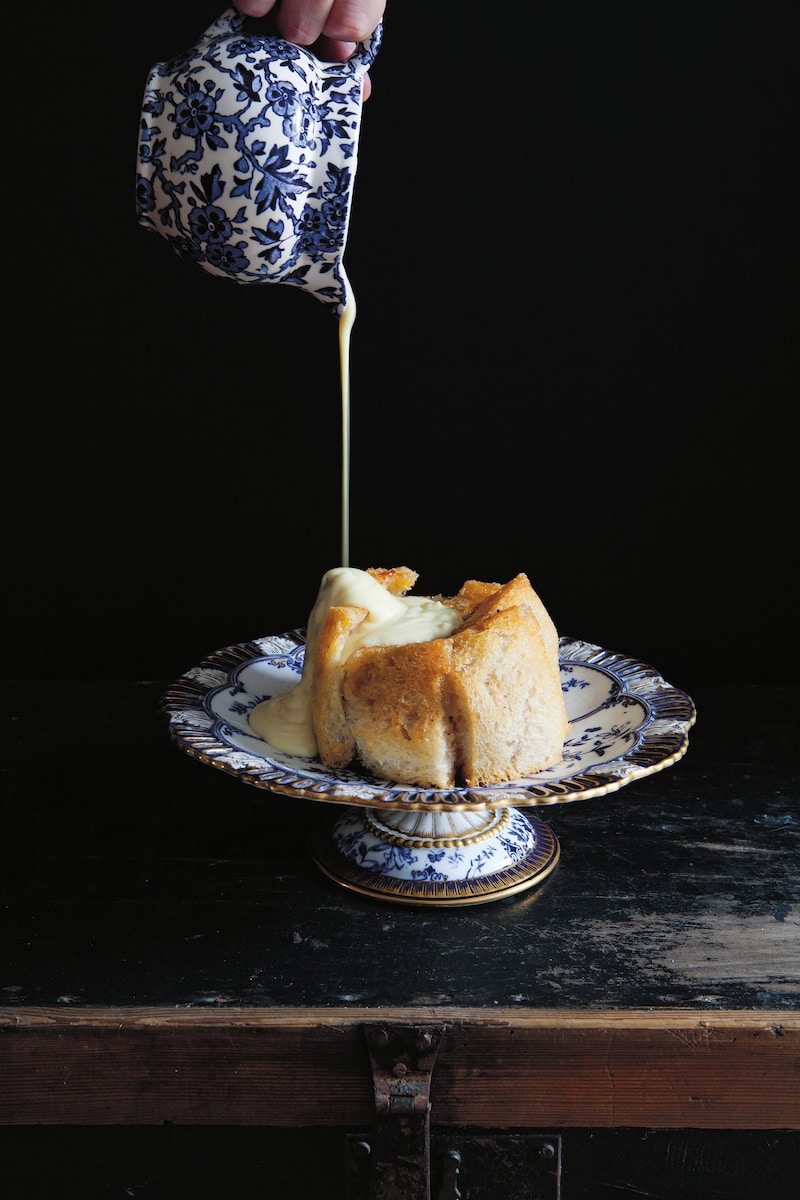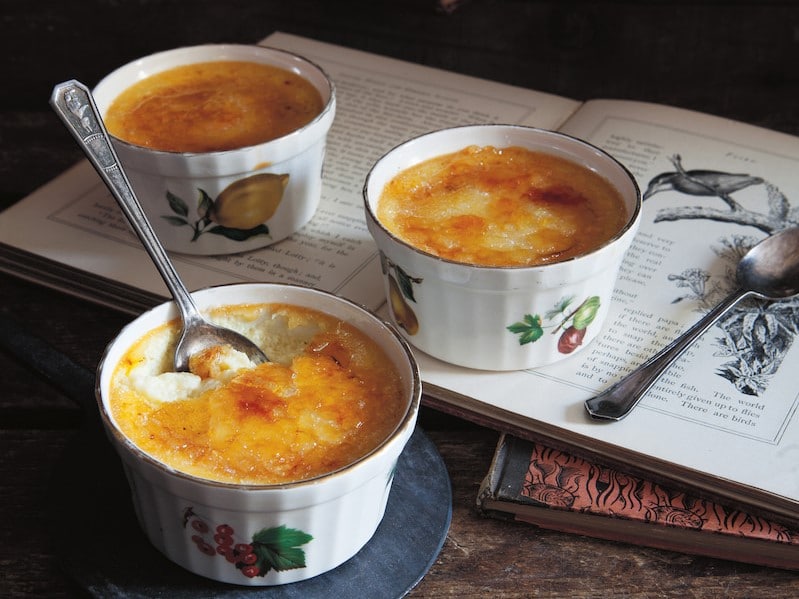While the weather outside is positively dreary, whisk your kitchen into the romance of Jane Austen novels through these recipes fit for high society.
Trinity burnt cream
Makes 6
- 6 egg yolks
- 1 tsp plain (all-purpose) flour or rice flour
- 800ml milk
- 1 cinnamon stick
- 1 tsp chopped candied lemon peel
Preheat the oven to 180°C.
Whisk the egg yolks thoroughly in a large bowl and stir in the flour. Boil water in a kettle or saucepan so you have hot water at hand.
Put the milk in a saucepan over low heat with the cinnamon and chopped lemon peel. Bring to a simmer, then when the milk starts to bubble, remove the saucepan from the heat.
Take out the cinnamon stick. You can strain out the candied peel too, if you like, but I never do and quite enjoy a bit of peel here and there.
Pour a small amount of warm milk into the egg yolks and whisk thoroughly. This prepares the yolk for the hot liquid and will prevent it from curdling. Gradually add the rest of the milk, whisking constantly until it is all incorporated.
Place the ramekins in a large baking dish and pour in enough hot water to come about 1.5cm up the sides. Now pour or spoon the warm custard mixture into the ramekins, filling them up right to the top. If a foam develops, skim it off with a spoon.
Bake in the middle of the oven for 50 minutes or until the mixture is set but still has a gentle wobble. Carefully and cautiously lift the ramekins out of the baking dish and place them on a wire rack to cool.
Transfer them to the fridge when cooled, until you need them. When you are ready to serve, gently spread a teaspoon of sugar over each custard and then get out your kitchen blowtorch. Gently burn the sugar by holding the flame just above it and moving the torch around until the sugar is caramelised.
Fastidious fact: Trinity burnt cream is a pudding that, according to legend, first appeared in 1617 at Trinity College in Cambridge; however, even the college can’t trace the pudding as far back as 1617.
Apple Charlotte

Makes enough for 1 charlotte mould or loaf tin
- 3 cooking apples, such as Granny Smith or Bramley, peeled and cored
- 5 Tbsp apricot jam
- 60ml (1/4 cup) brandy or dark rum
- 1 loaf of stale plain white bread
- 50g butter, melted
- Sugar, for sprinkling
Preheat the oven to 190°C. Generously grease the mould or loaf tin with butter and place a disc or strip of baking paper in the bottom.
Chop up the apples and put them in a saucepan with the apricot jam and brandy. Cook until soft and pulpy. You might need a splash of water to prevent the apples from burning. Allow to cool in the pan.
Cut thick slices of bread in 5cm wide rectangles the same height as the side of the mould and use a pastry brush to generously coat them with the melted butter. Place the bread in the mould, overlapping the edges a little so there are no gaps. Finally put a disc or strip of bread onto the bottom of the mould, making sure there are no gaps.
Scoop the apple mixture into the bread-lined mould, then close the top with a final few slices of buttered bread, and sprinkle some sugar on top.
Bake in the middle of the oven for 30–40 minutes until golden brown, as you prefer your toast. When ready to serve, turn the mould onto a plate and allow to stand for 5 minutes before attempting to remove the mould.
Serve with clotted cream, brown bread ice cream, vanilla ice cream, or custard sauce, for the custard lovers.
Fastidious fact: It is said that the apple charlotte is named after Queen Charlotte, the wife of King George III, who might have been the patron of apple growers.
Get all the latest Canberra news, sport, entertainment, lifestyle, competitions and more delivered straight to your inbox with the Canberra Daily Daily Newsletter. Sign up here.



